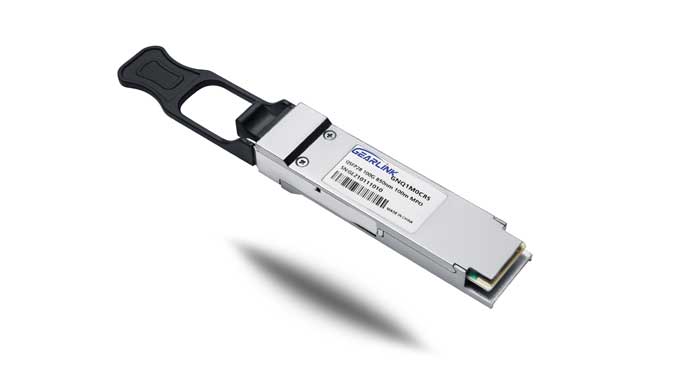100G optical transceiver has a transmission rate of 100Gbps, packaged in QSFP28. 100g transceiver has 4 independent optical signal transmission and reception channels, and the transmission rate of each channel is 25G. With the development of the optical industry centered on "100G network deployment", 100G optical modules have developed rapidly in the data center market.
As a professional 100g qsfp28 supplier and transceiver manufacturer, we also provide a variety of transceivers , for example, 400g transceiver, 40g transceiver, 25g transceiver, module sfp 10g, sfp transceiver, direct attach cable and active optical cable. Contact us to get 100g sfp price.




100G optical modules can be divided into 100G SR4/100G LR4/100G CWDM4/100G ER4/100G PSM4 according to the transmission rate; divided into single-mode and multi-mode modules, and divided into 100m/2km/10km/30km/40km according to the transmission distance.
3.3V power supply voltage
Four-channel full-duplex transceiver modules
Transmission data rate up to 26Gbit/s per channel
Built-in digital diagnostic function
Four independent full-duplex channels
Hot-pluggable QSFP28 MSA form factor
Operating case temperature: 0℃~70℃
Operating case temperature: -40℃~ 80℃
4x28G Electrical Serial Interface (CEI-28G-VSR)
4 channels full-duplex transceiver module
Class 1 Laser
4 DFB-based LAN-WDM cooling transmitter
Internal CDR circuits on both receiver and transmitter channels
LAN WDM EML laser and SOA+PIN Receiver
100G Ethernet
Client-side 100G Telecom connections
Proprietary High-Speed Interconnections
100G CWDM4 application with FEC
IEEE 802.3ba 100GBASE-ER4 links
Rack to Rack
Infiniband QDR, DDR, and SDR interconnects
Proprietary High Speed
Interconnections
Data center
The short-range qsfp28-sr4 transceiver supports up to 100 meters of connection through multimode fiber. This method is similar to using AOC cables, but structured cabling can be used here. They use more expensive non-standard MPO (multi push/pull cable) connectors, which offsets some of the cost savings of the transceiver.
The long-distance qsfp28-lr4 version supports up to 10km connection through single-mode fiber. They use standard LC connectors and use existing structured LC cabling.
Gigabit optical transceiver s are generally used on 1G ports, and 10 Gigabit optical transceiver s are generally used on 10G ports. Gigabit and 10 Gigabit optical transceiver s are relatively mature products now, and the cost performance is very high.
QSFP28 optical module belongs to a mainstream 100G optical module in the market. It provides four different signal channels, and the transmission rate is increased from 40Gbps to 100Gbps. But the size of the QSFP28 optical module is smaller than the other 100G modules.
The most direct way to connect 100g traffic is to use standard transceivers, and a variety of cables and transceivers are suitable for this.
In order to provide a cost-optimized solution to connect switches in racks or data centers, Ethernet switch suppliers want to maximize the density of optical transceiver ports on their equipment. In this way, they can provide the maximum number of channels and the lowest traffic cost per bit.
Most of these switch vendors choose the smallest shape transceiver: qsfp28 transceiver. It is the smallest module available and has the lowest power consumption among modules capable of handling 100g traffic. It is also worth noting that qsfp28 has the same physical size as qsfp + commonly used for 40g flow. This means that switch vendors can increase traffic throughput by 2.5 times without redesigning the front panel of their switches.
The 100G optical transceiver is a high-speed optical transceiver , which is generally used in the core layer switch of the data center. The core layer of the data center has particularly high bandwidth requirements, and high-speed optical transceiver s are required to support services. 100G optical transceiver is a very good choice.




